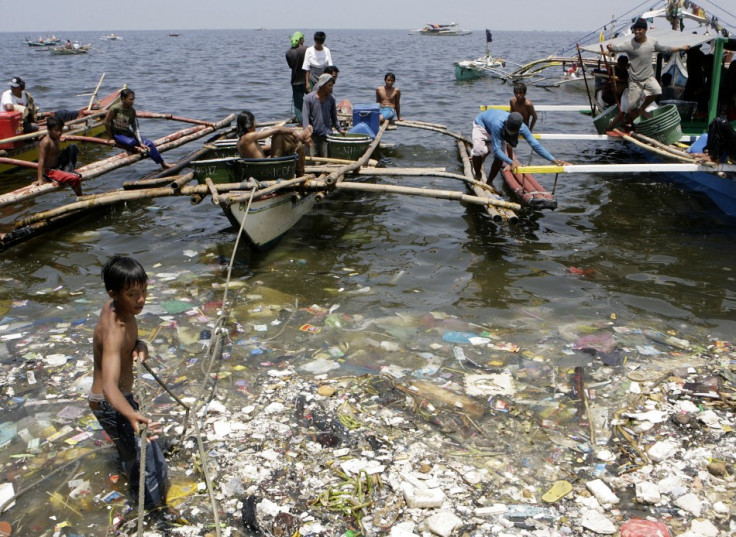Microbeads: How unnecessary plastic in everyday household items is destroying our oceans

One of the most visible manifestations of gratuitous environmental pollution must be that of plastic bottles floating in the sea. When it comes to waste plastics, it's not only what happens to containers that is a major issue, but, moreover, what manufacturers filled them with.
During recent decades, hundreds of companies have increasingly added quantities of so-called plastic microbeads to a wide range of consumer goods, including facial and body scrubs, sunscreens, toothpastes and washing powders among other products. The plastic particles are added to enhance product performance and designed to be carried away in wastewater. From our showers, sinks and washing machines, the minuscule microbeads travel to sewage treatment works, where being so small they pass through filters and escape into the oceans.
Most are microscopic and this is an issue all of itself, as when it comes to plastic pollution in the seas, size most certainly matters. This is because small particles of plastic have a bigger surface area than if they were bunched together in single piece of equivalent mass. Plastics drifting in the sea attract persistent toxic pollutants that bind to their surface, and the bigger the total surface area the more pollutants that are attracted. These pollutants include toxic materials such as pesticides (such as DDT), flame-retardants and polychlorinated biphenyls (PCBs) that were once used inside electrical equipment. These and other poisonous substances cause a range of biological effects, including the disruption of hormonal activity.
Microbeads are designed to last a long time in products, and are similarly persistent in the sea. They look like the eggs of small fish or tiny planktonic organisms and so, are taken up by filter feeding creatures such as krill, shrimps, crabs, lugworms, oysters and small fish.
Among these and other animals, microbeads can cause gut blockage, altered feeding behaviour and reduced energy allocation, resulting in impacts on growth and reproduction. Smaller animals are in turn eaten by bigger ones - including fish, birds and marine mammals - and, as the microbeads and their attendant toxins travel up through food webs, the poisons become more concentrated, including in the fish that people eat. So it is that some of what we wash down the sink comes back, and in the process brings a toxic cargo with it.
The European Commission estimates that each year Europe releases nearly 9,000 tonnes of cosmetic microbeads into the ocean, although the total quantity is bigger than this. For example, industry association Cosmetics Europe doesn't recognize plastic particles smaller than 0.001 mm as microbeads, and so doesn't include these in their official statistics.

One bottle of sunscreen can contain as many as 10 trillion of these plastic nanoparticles and, considering the vast quantity of such products sold each year, the tonnage of microbeads entering the marine environment from personal care products is very likely higher than generally estimated.
The biggest tragedy is the fact that all of this is totally unnecessary. Alternatives are available, for example, in some products, ground-up rice, salt, sugar, almonds, and coffee beans can achieve the same outcomes as plastics, but, when released, they bio-degrade or dissolve. While it is often convenient for manufacturers to use plastics because of more consistent product characteristics and longer shelf life, the wider consequences of these ingredients require that urgent action is taken to get rid of them.
The Marine Conservation Society (MCS) says products containing microplastics can be identified (and avoided) by looking at the ingredient list and leaving on the shelf those with polyethylene or polythene (PE), polypropylene (PP), polyethylene terephthalate (PET) or polymethyl and methacrylate (PMMA). With that kind of information, there is no doubt that an element of consumer pressure will cause some brands to phase out microbeads. Indeed, some leaders have already said they will to do that.
Unilever, Boots and Asda have, for example, publicly committed to end the use of solid microplastics in their products and Cosmetics Europe has released guidance to its members to phase out microbeads from wash-off personal care and cosmetic products. That is helpful, but as history reveals from many other voluntary undertakings from industry groups, it will most likely not lead to what is required. This is why conservation groups including MCS and Fauna and Flora International (FFI) say new laws are needed, not least to ensure that those businesses planning to act are not undermined by industry laggards.
With some manufacturers already taking action and industry bodies signalling the need for change, public opinion is the other major factor that will determine the scope for political action. Here, too, there is good reason to believe the time is right for new legislation. Results from a survey commissioned by Greenpeace, published this month (April 2016), reveal how the vast majority of British voters, in excess of 90 per cent, support a legal ban on plastic microbeads similar to that already introduced in the United States by President Obama.
The damage being caused to marine wildlife by waste plastics is widespread, serious and growing, including that arising from tiny microbeads. The UK has every good reason to act, not least because it has taken a leadership role when it comes to the designation of very large marine nature reserves in its dependent territories. If these new protected areas are to achieve their conservation goals, however, then it will also be necessary to tackle pollution problems that threaten the integrity of ocean ecology, including that arising from the wholly unnecessary discharge of plastic microbeads.
Tony Juniper is a sustainability and environment adviser. His latest book, What is really happening to our planet?: the facts simply explained, will be published in June 2016.
© Copyright IBTimes 2025. All rights reserved.






















